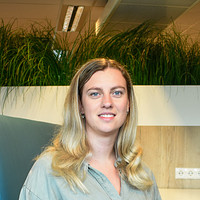OBSERVED: Odour Based Selective Recognition of Veterinary Diseases
The OBSeRVeD project aims to develop a sensor system for early detection of poultry health issues using volatile organic compounds, enhancing disease control, animal welfare, and public health.
The OBSeRVeD project (Odour Based Selective Recognition of Veterinary Diseases) focuses on developing a sensor system that enables early detection of health problems in poultry. This system will allow farmers and veterinarians to intervene in a timely manner, thereby limiting the spread of diseases and improving animal welfare. Poultry is the largest source of animal protein for human consumption worldwide due to its relatively low production costs and the absence of religious barriers. The Dutch poultry sector is a major exporter of eggs and meat, with millions of laying hens and broilers on thousands of farms.
Questions?
Feel free to contact us.
dr. ir. Cas Damen
Origin of the Project
The OBSeRVeD project arose from the urgent need to improve the health and welfare of poultry through early disease detection. Large-scale operations and high production efficiency in poultry farming make the animals highly susceptible to infections. At the same time, societal demands lead to reduced use of antimicrobials in animal feed, more outdoor space for poultry, and shifts towards organic and circular feeding concepts. These developments, although beneficial, can paradoxically also threaten the sustainability of poultry production due to increased infection risks and reduced gut health.
Problem Statement
Currently, many infections are only detected after they have spread widely within or between flocks, or after food-related or other zoonotic infections have already affected public health. Examples include Campylobacter and Salmonella, which often go unnoticed and are the most common causes of food poisoning in consumers of eggs or meat. Severe intestinal inflammations caused by Clostridium perfringens also often become visible only after widespread infection with Eimeria. Additionally, red poultry mites only become visible when they have accumulated in large numbers in the housing system.
Project Goal
The goal of this project is to develop new methods for the early detection of these infections by using volatile organic compounds (VOCs) as biomarkers. By detecting these VOCs with a compact and economically viable electronic nose system, we can enable early interventions that limit the spread of diseases and improve the health and welfare of poultry. This will not only enhance the productivity and sustainability of the poultry sector but also protect public health by reducing the risk of food-related infections.
Funded by:
NWO (NWA-ORC project)
Involved group members

























